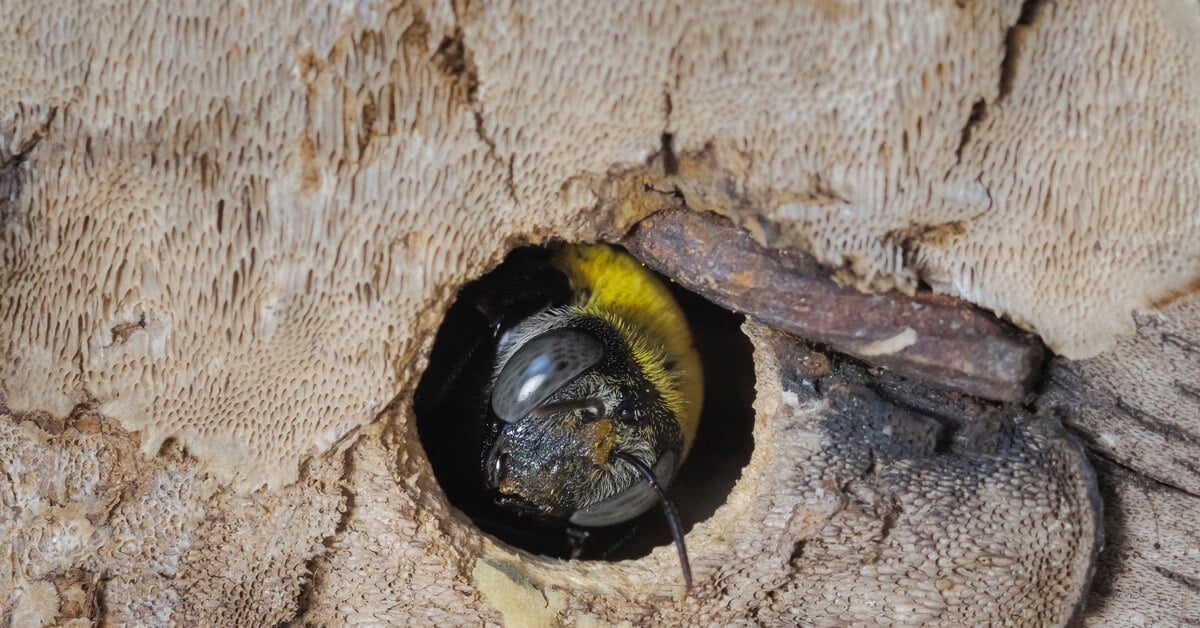Carpenter Bee FAQ

Have you noticed holes in the wood outside your home? Do you see bees that look somewhat like a bumblebee but different? You may have carpenter bees that have taken up residence.
What do you know about carpenter bees? With the current publicity to save the honeybees, should you try and get rid of bees? Many people have little knowledge about carpenter bees.
Keep reading to find facts about these bees and if you have a bee problem that needs fixing.
Answers to Common Questions About Carpenter Bees
Do you have a carpenter bee infestation, or are you just curious about these insects? Learning about them can help you determine if you need to call a pest control company. Check out these carpenter bee FAQs.
Are Carpenter Bees Dangerous?
Carpenter bees are often confused with bumblebees. You can differentiate them because carpenter bees are shiny with hairless abdomens.
Carpenter bees don't live in colonies or have a hierarchical structure. They tend to live in male/female pairs.
The adult female digs new tunnels or expands previous ones in wood to lay their eggs. Carpenter bees may also take up residence in old tunnels during the winter.
While less destructive than termites, these bees can create structural and cosmetic damage. These holes also create an inroad for moisture, decay, and rot.
Do Carpenter Bees Have Stingers?
The female carpenter bee has a stinger that's a modified egg-laying tool. Since males don't lay eggs, they don't have this tool or a stinger. The good news is that they're not aggressive unless you threaten or provoke them.
Since the female is usually inside the nest, it's unusual for her to be out stinging people. Yet, if you do "poke at that nest," you could get a painful sting.
How Long Do Carpenter Bees Live?
Carpenter bees can survive for up to three years. They also produce one to two generations each year. The mother and her newly hatched daughters often live in the nest together.
What Do Carpenter Bees Eat?
For the most part, carpenter bees eat vegetables and flowers in the early morning. They use "buzz pollination" to collect pollen.
The bee lands on the flower blossom and uses its powerful thoracic muscles like a tuning fork. They generate ultrasonic vibrations that shake the dry pollen grains loose.
At times, these bees will also forage for nectar. Due to their large size, they can't get into the flower opening.
Thus, they use their mouthparts to cut slits at the petal base to get the nectar. Unlike other bees, they don't pollinate the flower when gathering nectar.
What Eats Carpenter Bees?
Carpenter bees have few natural predators. Woodpeckers are the main threat, as well as other birds such as shrikes and bee-eaters. A few mammals, like ratels, also eat carpenter bees.
How to Deter Carpenter Bees?
If carpenter bees pose a sufficient threat in your area, you may want to place vinyl siding on your house. Another option for new construction is to choose hardwood to reduce their burrowing. Examples include cherry, ash, and oak.
Applying varnish, paint, or stains creates a less hospitable environment for these bees. It also prevents moisture from clinging to the wood and causing rot.
Sealing holes and cracks in wooden structures prevents these bees from moving in. While they do create new tunnels, they prefer to expand old ones. If they can find other convenient accommodations, they'll probably go there.
How to Stop Carpenter Bees?
Some individuals ask about using carpenter bee traps. This can help capture and remove the adults, but it probably won't solve the problem. By the time you catch the bee, it has probably already laid its eggs.
This leaves you with a new generation on its way. You can set new traps for the next generation, but this is a tedious and time-consuming process. And, in the end, it may prove ineffective.
If you're experiencing a carpenter bee infestation, it's often best to call the professionals. Exterminators have training and experience to manage your carpenter bees and other pests.
They'll begin by eliminating the adult bees. From there, they perform steps to eradicate the eggs and larvae. Once this is done, the expert will discuss your situation and how to prevent a recurrent problem.
One key to avoiding a reinfestation is to take proactive and preventative measures.
Are You Looking for Pest Control in Your Area?
Carpenter bees are only one of the pests that plague individuals and businesses. Viking Pest serves New Jersey, Delaware, Eastern Pennsylvania, and Maryland's Eastern Shore. We have over 40 years of experience helping residential and commercial customers.
Our staff works to protect your property and keep your living and work areas healthy. We use state-of-the-art technology and sustainable solutions to prevent and solve problems.
Viking Pest uses Integrated Pest Management (IPM) techniques. They focus on identifying the core pest problem and then controlling it from the source. IPM pest control materials reduce risks to human, pet, and environmental health.
Schedule an online free, no-obligation estimate today.











